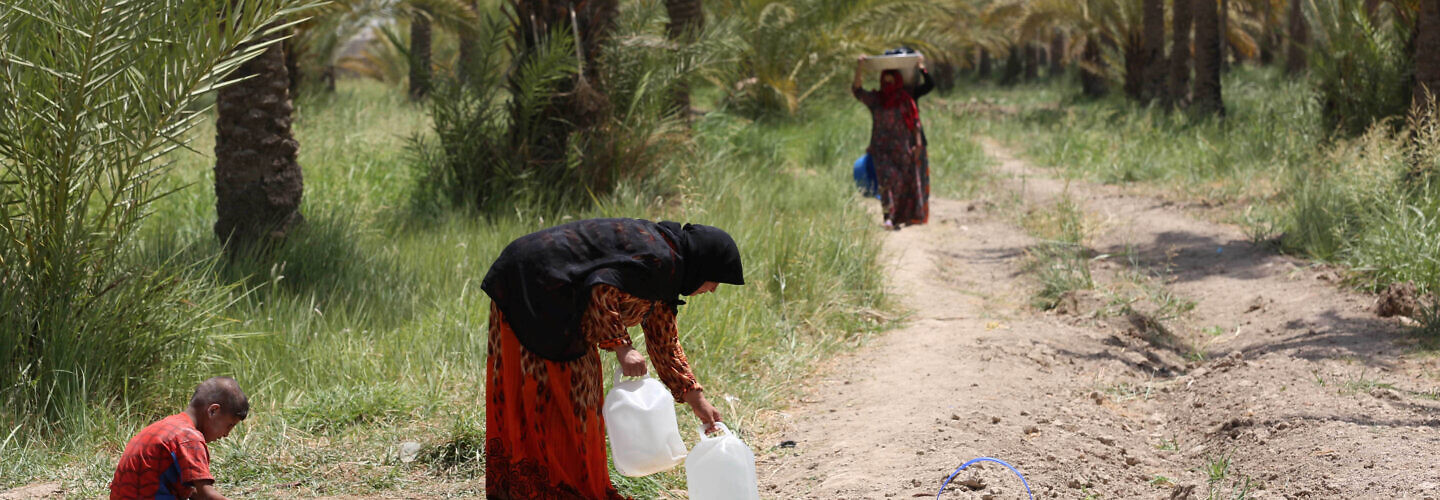The Middle East and North Africa (MENA) region, home to widely diverse cultures and a population of about 500 million, is highly exposed to the impacts of climate change. While high temperatures are common there, nearly half of the population could be annually exposed to anomalous super and ultra-extreme heatwaves—up to 56 °C and higher during several weeks—by the end of the century. Recent climate science predicts an average temperature increase of up to 4 °C by 2050 for the region in a business-as-usual scenario. The region has also undergone rapid environmental degradation during the past few decades. Over 82 percent of its terrain is desert, and rising temperatures are poised to accelerate desertification rates in dry-land areas.
It is also the the world’s most water-scarce region, and is home to 13 of the 20 most water-stressed countries. Water rationing and the restriction of water supplies have become a stark reality in parts of Algeria, Lebanon, Iraq, Palestine, and Jordan. It is estimated that up to 17.8 million people lack access to safe water and adequate sanitation services in Yemen.
MENA countries with low adaptive capacity find themselves particularly vulnerable to climate change’s adverse effects. At the same time, violent conflicts have erupted in Syria, Yemen, Iraq, Turkey, and most recently in Gaza, fundamentally weakening their capacities and even threatening their integrity. These conflict-affected areas face additional challenges in effectively mitigating climate risks. This challenge is not only due to the lack of climate financing but also the impact of political repression and violence on undermining people’s agency and depleting resources necessary for climate adaptation.
Read more: theglobalobservatory.org
Photo: theglobalobservatory.org


Leave a Reply